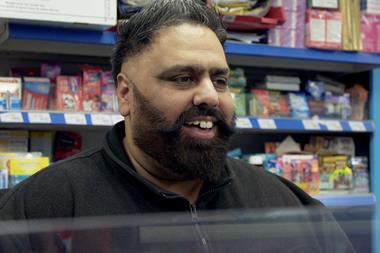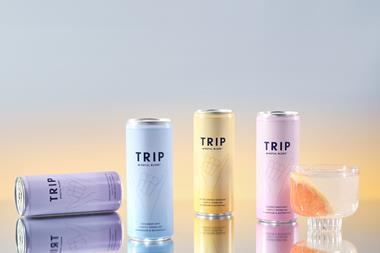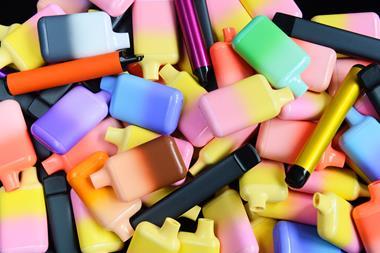There’s no sign yet of the energy and sports drinks category slowing down. Robin Mannering looks at how retailers can keep the high going.
Sports and energy drinks need no extra stimulation at the moment - the sub-category just keeps on going, and growing. To illustrate the point, sports and energy grew by 12.8% in the year until the end of March 2012 (according to Nielsen) and was the fastest growing sector within FMCG for the second consecutive year.
The energy sector, in particular, performed exceptionally well, with growth of 16.4% over the same period. In impulse, energy now commands a 24% share of the soft drinks market, with recent growth up to 18% (Nielsen, January 28, 2012). In fact, according to Mintel, sports and energy is expected to deliver 50% of soft drinks growth by 2015, and energy drinks is the only sub-category predicted to deliver consistently strong growth over the next three years.
However, the path ahead requires skilful navigation, with retailers warning of the perils of allowing the big brands to be cannibalised by the lower cash margin glut of value products coming on to the market.
CCE head of energy Stuart Agates says: “The trend towards sports and energy products shows no sign of slowing in 2012. They are now not only consumed before and after physical activity, but a huge 82% of sport and energy drinks are actually consumed at home.”
And speaking of physical activity, the feast of sports activity over the summer will further benefit the category, points out GSK long-term strategy director Colin Seymour. “Evidence shows that sports participation increases significantly around such events. This provides a huge opportunity for the sports and energy sectors, with increased purchasing and usage opportunities,” he says.
retailer’s view
“The category is doing pretty well and getting more value as the summer gets going. There are more pricemarked packs being introduced, which helps sales. The big sellers are Monster and Powerade Sports, while Red Bull is consistent, but has declined overall. People haven’t taken to the larger Red Bull cans as much as we’d expected.
“The smaller, cheaper own brands have gatecrashed the party, such as Nisa’s Emerge. However, we’re against putting them in the fridge as the cash margin is much lower. My strategy is ‘less is enough’ - just do a couple of the cheaper lines and keep them out of the fridge. I also want to keep the cheap brands out of the fridge to discourage kids from drinking them too much. I try to be a responsible retailer.”
Rav Garcha, Nisa Local, West Midlands
No Fear Energy brand manager Neal Haworth adds: “This summer’s sporting calendar is a real gift for the sports and energy drinks category here in the UK. An influx of supporters flocking to sporting venues, who all need refreshments throughout the day, will certainly add to the steep increase that the industry has witnessed recently.
“And as the sport on TV spurs the British public up out of their armchairs and outside, it’s an opportunity for independent retailers to allocate an increased amount of chiller space to sports and energy drinks, and capture impulsive sales through effective in-store merchandising.”
Red Bull remains the number one functional energy drink with a 22% share of the sports and energy category, with the 250ml can topping the table. Lucozade Energy Orange 500ml and 380ml, Lucozade Sport Orange 500ml, and Monster Energy Original 500ml follow closely behind.
Lucozade Energy grew by £17m in the past year alone, while Monster grew by nearly £18m and is now worth £52m (Nielsen). Other big sellers include Relentless Original 500ml, Euroshopper Original 250ml and Powerade Berry Tropical 500ml (Nielsen). But chasing on the big guns’ tails is the recently launched Mountain Dew Energy, whose value increased by 269% to £18m last year. “Awareness levels of Mountain Dew have been driven by marketing investment, which has seen a significant presence online, with the brand’s Facebook page coming into the top 15 for food and beverage in the UK,” says Britvic commercial director impulse Kate Fletcher.
New on the scene
Within the sub-category, the top 20 SKUs deliver 72% of value sales - which means retailers should have a focused range and not give space to products which add little or no value, says Red Bull trade communications manager Tom Smith. However, despite the dominance of a relatively small number of products, innovation and NPD were fundamental to driving performance in 2011, believes Seymour.
He points out that there was marked success from products which directly aligned to demand for healthier low-calorie alternatives. AG Barr’s Rockstar Pink, targeted specifically at women, and Red Bull Sugarfree are examples of low-calorie NPDs for the health-conscious consumer. In addition, CCE’s Relentless Sugarfree accounts for nearly £4m of overall value sales.
Some 43% of sports and energy NPD value came from Lucozade last year, and the brand continues to innovate this year. This summer it introduced a new Caribbean crush flavour and limited-edition British-themed variants - Lucozade Sport summer fruits and Lucozade Energy mixed berries - which aim to help retailers to capitalise on demand for all things British.
CCE has also been busy innovating over the past year or so, with 2011’s launch of Powerade Energy delivering more than £7m of sales to date. Powerade Energy, described as the first soft drink to provide ‘dual energy’, is available in sparkling berry and sparkling orange. It has just added another variant to its Relentless range, which grew by 17.1% last year.
retailer’s view
“People are beginning to veer away from the big brands, although the traditional brands such as Lucozade are still selling well. Lucozade isn’t looked on as an energy drink in the modern sense by young people, who are the main consumers now. You have to limit own brand and npd or they’ll cannibalise the category. With the newcomers you’ll do the volumes, but if the cash margins aren’t there you have to be careful. I limit my stock of own brand and npds to about two or three. There has to be a balance between quality of product and margin.”
Arjan Mehr, Londis Bracknell, Berkshire
To coincide with the launch of Relentless apple & kiwi, the entire Relentless portfolio has undergone a bold makeover, with the new packs offering a brighter, eye-catching design for stand-out on shelf. CCE’s Agates says: “We’re confident the new apple & kiwi variant will be a big success with consumers this summer. Relentless is a key brand within the energy sector and it’s important we maintain its growth with innovation to offer further choice for different consumer needs. 2012 is set to be a huge year for the brand.”
Meanwhile, new to the Monster range is Monster Rehab, which offers a mix of tea, lemonade, Monster Original and electrolytes, and is designed to refresh and rehydrate consumers the morning after a big night out.
AG Barr has expanded its Rockstar range with the launch of Rockstar Xdurance berry 500ml. It claims that Xdurance, designed to prepare consumers for ‘extreme mental and physical performance’, is now the fastest-selling big can energy drink in the impulse channel (Nielsen Scantrack). AG Barr head of marketing Adrian Troy says: “NPD is the key driver of growth, bringing interest and incremental sales to the energy market. In February we launched a new flavour, fruit punch, under the successful Rockstar Punched brand, and we have just launched an all-new Xdurance orange in 500ml PET in plain packs and 99p pricemarked pack (pmp).”
Think big
Size matters, it seems, and large can sizes of up to 500ml are packing a punch in the market. “Drinks presented in the ‘big can’ format are performing particularly well,” explains Troy. “There are plenty of options available for retailers to meet the growing demand for 500ml ‘big can’ drinks.”
Bestway and Batleys impulse negotiator Zahir Abdullah adds: “Larger packs such as Red Bull 473ml and 500ml Monster packs have been developed to encourage volume trade up and should also be considered within your range.” Red Bull is also available in 355ml and 330ml bottles, with the latter the number one NPD in the category last year.
CCE’s Agates says the growth of in-home consumption has prompted the company to introduce pack formats for future consumption, such as the new Relentless and Monster four-packs. “It’s important we offer a broad mix of pack formats to meet the diverse needs of sports and energy consumers,” he adds.
Top 12 functional drinks
1. Red Bull Energy original 250ml
2. Lucozade Energy orange 500ml
3. Lucozade Sport orange 500ml
4. Lucozade Energy orange 380ml
5. Monster Energy original 500ml
6. Relentless original 500ml
7. Euroshopper original 250ml
8. Red Bull Energy original 355ml
9. Lucozade Energy original 500ml
10. Red Bull Sugarfree original 250ml
11. Lucozade Energy Original 380ml
12. Powerade berry & tropical 500ml
Source: Nielsen MAT Convenience to January 7, 2012
For glucose sports drinks, 380ml and 500ml sizes are responsible for all the volume in this sector, says Abdullah. Lucozade Sport orange 500ml was the top-selling glucose drink last year (Nielsen). Abdullah says that the rise of bigger pack sizes is partly because retailers need to trade shoppers back up from value packs to more value-added packs. “This will come from either driving up the pack price of value brands, or encouraging shoppers to trade up to bigger brands or bigger pack sizes,” he comments.
Own brands
Own label energy drinks are driving the category forward, with SKUs such as Boost, the Euroshopper Energy Drink, Nisa’s Emerge and Bestway’s Stimulation providing low prices and decent percentage - rather than cash - margins. Last year Spar launched its own label S Budget range, which includes the successful S Budget Energy Drink.
Spar brand director Susan Darbyshire says: “One particular success story [in the S Budget range] is the S Budget Energy Drink, which has sold a million singles since its launch, leading to a boost of overall energy drinks sales in Spar stores. The demand for better value products in convenience stores has never been greater.”
Another way to communicate value is through pricemarked packs. Recent research by HIM shows that 69% of all impulse retailers said sales of pmps had risen in their stores last year, while the same study showed that 52% of retailers felt they were getting a good deal with pmps. Many of the own brands are pricemarked to add further reassurance to bargain-hunters.
But the growth of lesser- known, low-value brands can be to the detriment of overall margins, retailers warn. Nisa retailer Rav Garcha agrees with Bestway’s Abdullah over the importance of trading shoppers up from the budget brands. He says he limits the amount of own-brand energy drinks he puts in the chiller in order to discourage purchase, due to the low cash margin. “My strategy is ‘less is enough’ - just do a couple of the cheaper lines and keep them out of the fridge,” he says.
Londis retailer Arjan Mehr follows suit: “With the newcomers you’ll do the volumes but if the cash margins aren’t there, you have to be careful. I limit stock of own brand and npds to about two or three.”
GSK agrees that, with the growing proliferation of products within the category, it is increasingly important for retailers to merchandise in the correct way. Among its recommendations are grouping together products which deliver a similar benefit, and that beacon brands be featured more heavily and in a more visible place on fixture compared with smaller brands.
Red Bull adds that signpost brands should be at eye level and at the centre of the planogram to drive the most penetration. It also recommends using the ‘stair step’ approach, in which different sizes are stocked next to each other.
Summer of sport
With the Olympics spearheading a busy summer of sport, there is much marketing activity in the sports and energy sector. As the official fitness drink of the Olympics, Powerade Sports drinks currently features an exclusive on-pack promotion, giving away a Powerade Olympic Games sports bottle free with every purchase. The iconic sports bottle is the same bottle that will be used in the Olympic Village.
The promotion runs until the end of October and will feature on promotional packs of Powerade ION4 and Powerade Zero. Meanwhile, Powerade Energy will continue to benefit from a “significant” marketing campaign throughout 2012, including TV advertising and national sampling.
Elsewhere, Red Bull Sugarfree will be backed by £2m investment in 2012, focusing on the low-calorie message, and the brand is currently on TV and in cinemas with the World of Red Bull campaign.
Lucozade Sport will be subject of campaigns throughout the year, supporting its array of sports sponsorship including the Premier League, UK athletics and a number of Premier League football teams.



























